Fellow Opus Grinder Review: The Almost Perfect All-In-1
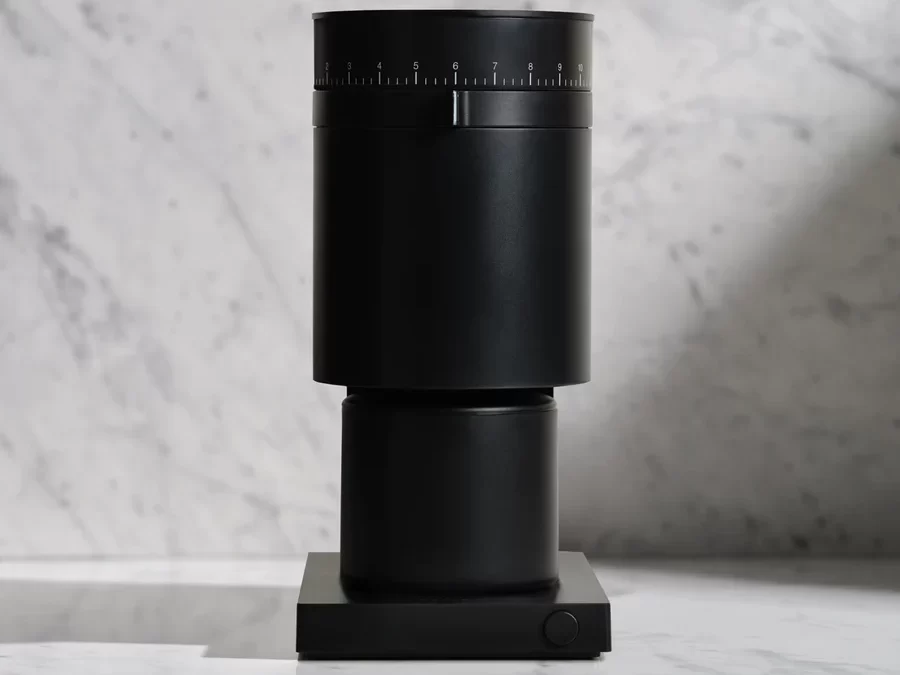
Heads up: This content is reader-supported, meaning we may earn a small commission if you click on some of our links.
Unless you’re living under a social media rock (and if you are, we’re more than a little jealous), you’re likely familiar with the coffee gear brand Fellow.
Fellow makes some of the most attractive and innovative coffee gadgets today and is widely prevalent among coffee novices and experts.
This is likely because Fellow has achieved a near-perfect marriage of form and function; their Stagg electric kettle and Ode brew grinder are some of the most Instagram-able coffee tools around.
But, until now, Fellow had only produced one burr grinder (and a pretty exceptional one at that). However, the Ode brew grinder has one major drawback: it only grinds for filter coffee and cannot produce a fine enough grind for espresso or coarse enough for cold brew.
So what happens when Fellow announces a new coffee grinder capable of grinding Turkish coffee all the way to cold brew?
We pre-order one immediately, along with thousands of our closest internet friends.
Table of Contents
Fellow Opus Grinder Review
(Note: we were not compensated for this Fellow Opus review, nor did we receive any products from Fellow in exchange for the review.)
Here, we’ll share our initial impression and thoughts on the all-new Fellow Opus Grinder. But first, a little about Fellow.
What’s Fellow?
Headquartered in San Francisco, CA, Fellow started in 2013 as a Kickstarter campaign to create a different type of coffee brewer that was both functional and beautiful.
In the ten years since, Fellow has grown rapidly, raised over $40 million in funding from investors, and launched over 20 unique products in over 50 countries.
In a recent interview, founder Jake Miller said, “If someone puts our product into the cupboard instead of displaying it on the countertop, I think we’ve failed as designers.”
Their products reflect a modern and contemporary aesthetic, and the new Fellow Opus grinder is no exception.
Fellow products are well-made and feel extremely high-quality in hand. They are solid, sturdy, and made to stand the test of time. We’ve come to expect exceptional quality and precise functionality from the entire Fellow lineup.
This quality does come at a higher price tag, however. Fellow’s first pour-over-centric grinder, the Ode, has a starting price of $255 (at the time of writing) and goes up to $495, depending on your burr preference.
And while that price isn’t out of the question for many serious coffee enthusiasts, some may argue that it is high given its limited grinding capabilities.
Enter the Opus.
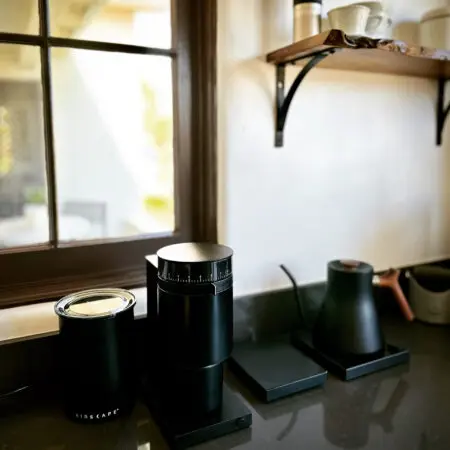
The Fellow Opus Grinder
The Fellow Opus grinder is the grinder many people have been waiting for. Designed to grind for all brewing styles, it’s a one-stop shop for home brewers who like to switch up their brewing methods.
But the range of grind settings isn’t the only stand-out feature of this grinder. This grinder was also designed to be more affordable than the Ode.
With a starting price of $195 (at the time of writing), the Fellow Opus grinder is priced in line with several significant competitors, such as the new Baratza Encore ESP, yet sits well below the likes of a Eureka grinder, for example.
But does the Fellow Opus grinder live up to our (high) expectations of the brand?

Fellow Opus Review
To say we were excited to test the Fellow Opus grinder out would be a giant understatement.
We unboxed the Opus immediately upon receiving it and jumped right in. Right out of the box, we noticed a few pros and cons.
Here’s what we like about the Opus grinder:
- A modern, clean aesthetic
- Relatively quiet in mid-range settings
- 41 click settings allow you to fine-tune your grind
- Anti-static technology works well
- Consistent grind across the board, even at espresso settings
- Exceptional value
Here’s what we don’t love:
- Plastic construction throughout
- Complicated micro grind adjustments
- High grind retention
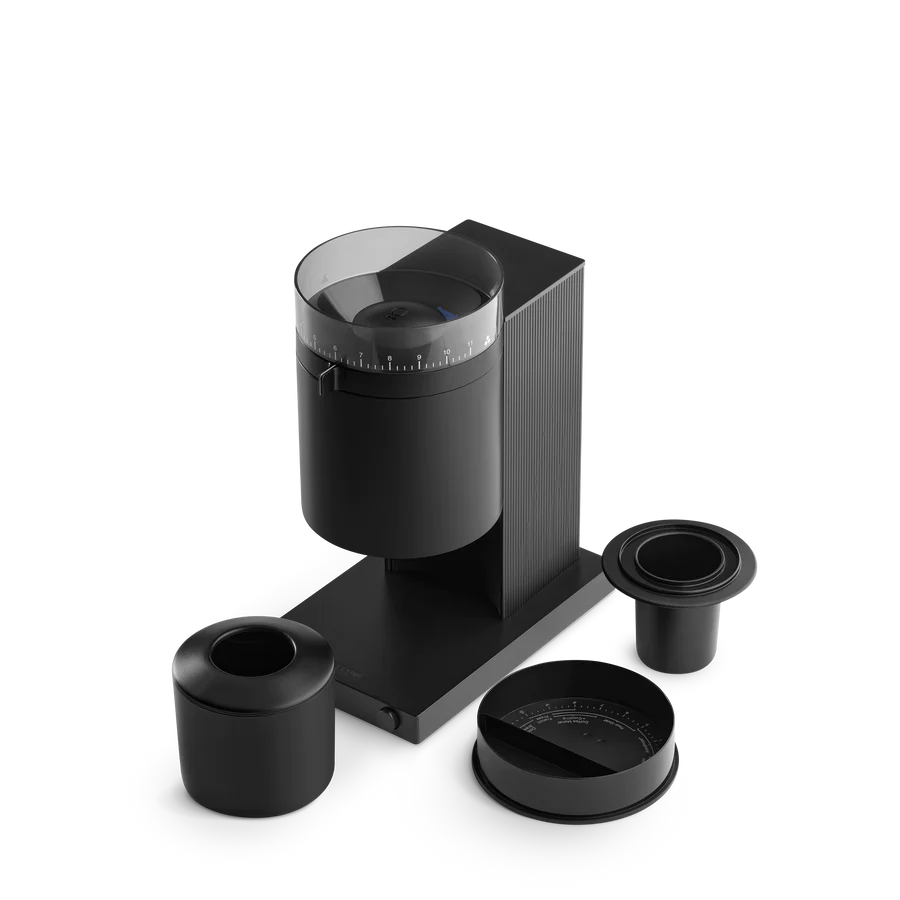
Fellow Opus Construction
When we say that the Opus features plastic construction, we mean everywhere. The housing, the catch cup, the base, the hopper, and the lid are all made of plastic. Basically, everything but the burrs inside is plastic.
Honestly, this surprised us coming from Fellow, but we assume that costs were cut so that they could introduce this grinder as a more approachable option in the market.
This doesn’t prevent the Opus from looking gorgeous on the counter, but it feels cheap in use. Additionally, plastic surfaces can quickly scratch and show wear and tear much faster than other materials.

We like the magnetic catch cup but wish it was made of aluminum like the Ode. It seems like an oversight that the two catch cups are not interchangeable; they are slightly different heights and materials.
We also really like the hopper lid on the Opus. It is plastic, of course, but it fits snugly into the hopper in an airtight way that makes opening and closing satisfying.
Additionally, the lid features a simple settings guide on the underside and can be used as a bean measurement tool for home brewers who don’t have a coffee scale.

Fellow Opus Ease Of Use
Here is where the Fellow Opus grinder shines. It is effortless to use, with one caveat.
If you’re like many homebrewers who want to set it and forget it, the Opus is for you. It grinds very well for filter coffee and espresso and is very simple to adjust with just a few clicks of the rotating knob using the guide mentioned above for reference.
That said, if you are a homebrewer who prefers to make more granular grind adjustments and dial in the perfect espresso grind, the Opus does not make this easy.
We won’t go into the nitty gritty of it here, but Lance Hendrick does a great job of explaining the complicated micro-adjustment process in his recent review of the Opus. Check that out if you want to feel like your brain is melting.
So, the Opus is straightforward as long as you’re happy with a few grind settings for each brewing style.
As for speed, the Opus isn’t the fastest grinder on the market and lags behind its older sibling, the Ode. But at this price point, this is a (very) minor trade-off, and the timed grind settings allow you to set it and forget it.
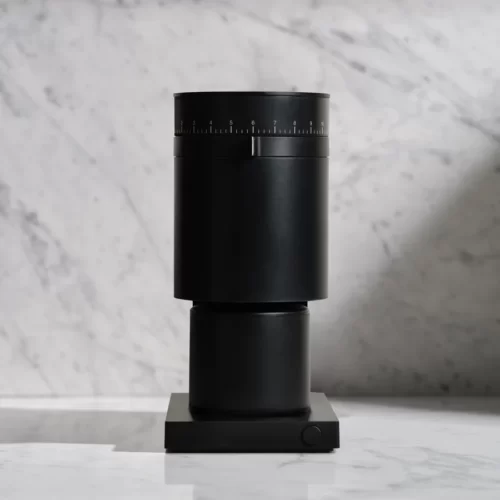
A Fellow Grinder For Espresso
The Fellow Opus grinder really can do it all, and it shines in the espresso grind settings. Not only does it grind well at these finer settings, but Fellow also included an espresso-specific attachment for the catch cup to make dosing easier.
The espresso catch cup fits nicely inside the magnetic cup. Once you’ve ground your coffee, place your portafilter (it works with 54 and 58mm portafilters) on top of the cup and flip it over for a mess-free dose.
In our testing, we found the espresso brewed from the Opus grinds was cleaner and brighter than that from a competitor (in this case, we used our 1Zpresso JX Pro for comparison since the burrs are similar).
The Opus features several timed settings at the press of a button; press once for 30 seconds, twice for 60 seconds, three times for 90, or press and hold for a 2-minute grind.
Or, if you prefer to eliminate the timed grinds and start and stop them yourself, you can disable this function by holding down the button while plugging the unit in.

The Opus is relatively quiet and should satisfy most homebrewers’ morning noise reduction needs. Some have recently described it as “whisper-quiet.” We won’t name names, but let’s say we agree to disagree on that topic.
The one minor issue we have with the Fellow Opus grinder is grind retention. While they advertise low grind retention, we have yet to find this to be true.
In our tests, we experienced relatively high grind retention, especially for a model with a direct drop-down design. Some grind retention is expected with all electric burr grinders, but even with a few taps to release the grinds, the Opus really holds onto them.
When grinding for espresso, the difference of 0.5 to 0.75 grams of retention is significant. But, at this price point, we won’t complain too much, and we’ll continue to tap the Opus after each grind session.
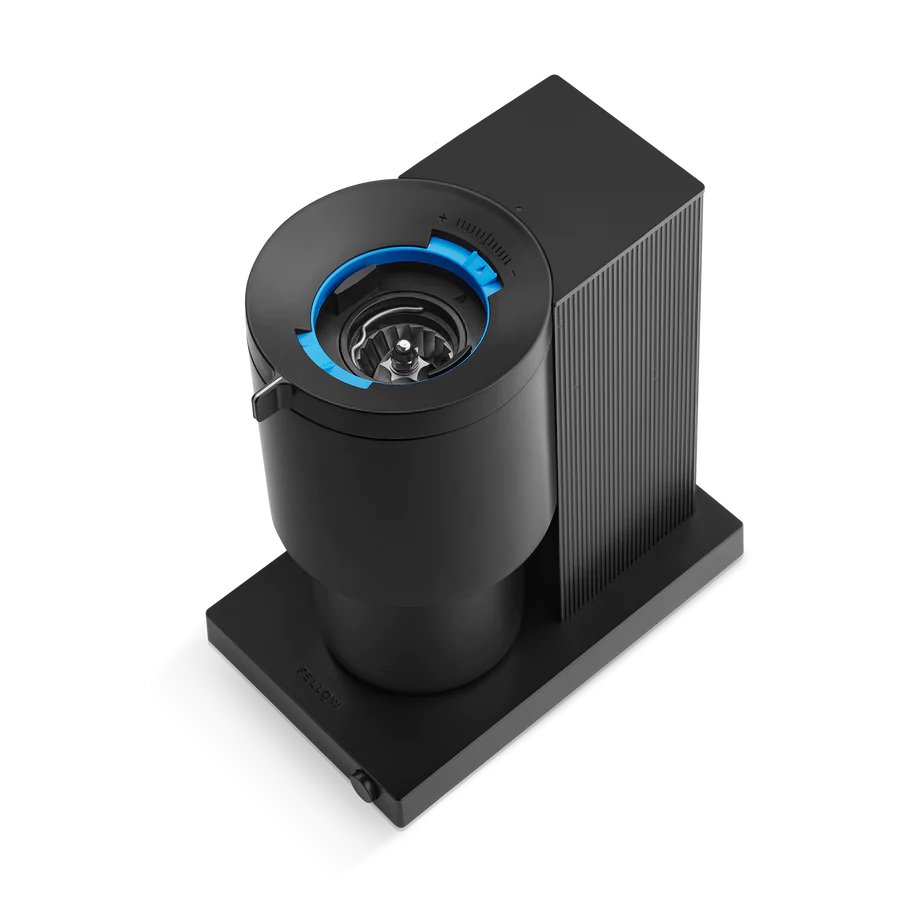
Fellow Grinder Cleaning
As with any burr grinder, you must clean the Opus to keep it operating at optimal performance.
After grinding, you’ll notice that a lot of chaff ends up in the hopper. However, it’s easy to remove the hopper and brush it out.
We also recommend that you take the Opus apart every once in a while to clean the burrs. Fellow has made disassembling the Opus very straightforward, with no tools required.
Cleaning the burrs is a breeze, so there’s really no excuse not to do it.
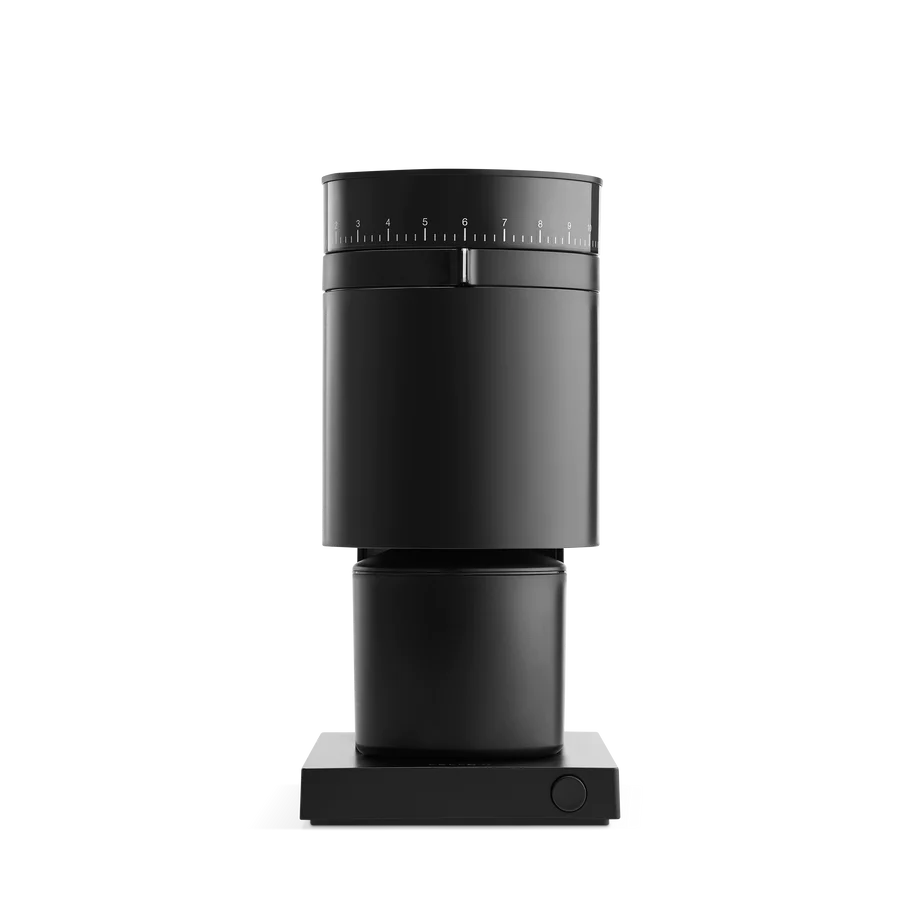
Fellow Opus Review: Final Thoughts
The Fellow Opus is an excellent buy at a starting price of $195 (at the time of writing).
While the grind retention and slower grinding speed are minor inconveniences, this grinder performs exceptionally well for the price. At under $ 200, it is a pretty impressive grinder for homebrewers who like to dabble in all sorts of brewing styles.
It comes with a 2-year warranty included or a 3-year when registering the grinder. Fellow stands behind the quality of its products, and Opus is no exception.
If espresso isn’t your thing and you typically stick to pour over or drip, we recommend opting for the Ode grinder. Fellow recently reduced the starting price of the Ode and now offers refurbished models as well, making it more affordable than it once was.
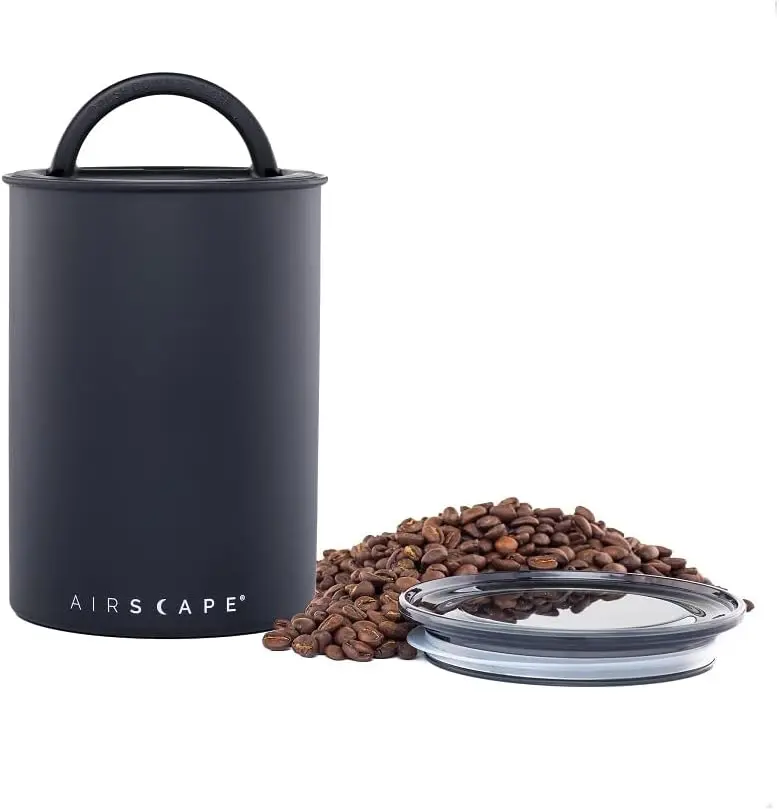
Frequently Asked Questions
Can Fellow Ode grind espresso?
If you skip the FAQs, we’ll make this short and sweet. No, Fellow Ode cannot grind for espresso.
The Ode grinder is a phenomenal burr grinder we highly recommend for homebrewers who only brew filter coffee. But the Ode may not be the best choice for anyone looking to switch up their brewing styles.
The Fellow Opus grinder is your best bet if you’re seeking an all-in-one burr grinder. It’s aesthetically pleasing on your counter and does an excellent job of grinding for multiple brew settings.
Why are burr grinders better?
We know how tempting it is to buy a cheap blade grinder and call it a day, but please don’t do that. Here’s why:
First, blade grinders are inappropriately named. They don’t actually grind anything. Blade grinders use a blade (duh) to chop up the beans, resulting in inconsistent grind size.
Getting the grind size right is essential. Otherwise, you’ll end up with either an under- or over-extracted brew (or a combo, gross).
Second, blade grinders generate heat as they chop, which causes the beans to release precious aromatics and impart a burned flavor onto the beans.
So, do us a favor and spend a few more bucks to get a quality burr grinder like the Fellow Opus and avoid the blade grinders altogether.
ABOUT THE AUTHOR
Heather Calatrello
Heather is the head coffee roaster and founder of ShedLight Coffee Roasters in San Diego, CA. Her solar-powered coffee roastery was recently the subject of a BlueDot Living dispatch, and she has repeatedly been featured in Food & Wine, Real Simple, Parade, and more.

